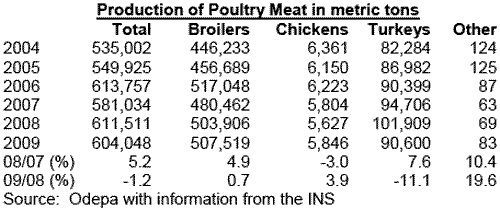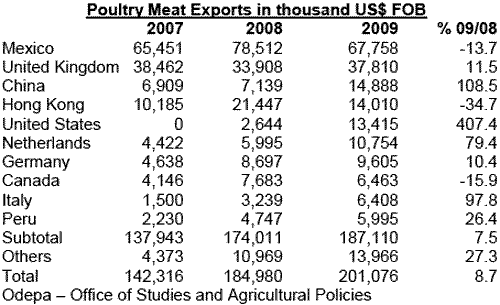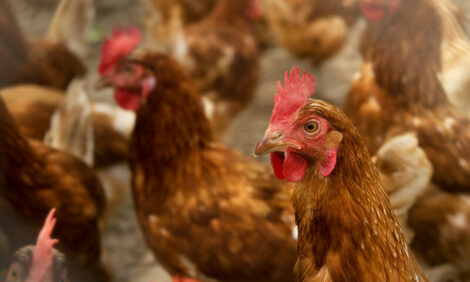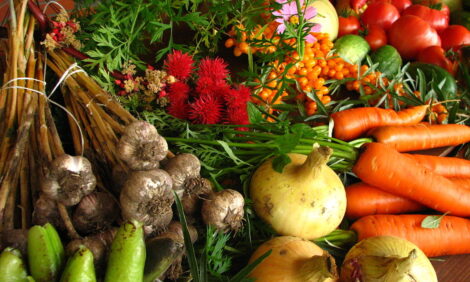



International Egg and Poultry Review: Chile
CHILE - This is a weekly report by the USDA's Agricultural Marketing Service (AMS), looking at international developments concerning the poultry industry. This week's review looks at Chile's poultry industry.Chile's poultry industry is highly concentrated, both geographically and in the number of producers. In 2009, 96.4 per cent of production came from just three regions: Valparaiso, Metropolitana and Libertador Bernardo O'Higgins. Almost 58 per cent of broilers were produced in LB O'Higgins; over 76 per cent of turkeys were produced in Coquimbo y Valparaiso; and 38 per cent of broilers and 21 per cent of turkeys were produced in Metropolitana.
The large companies that dominate the market are fully integrated with high production standards. The companies control the breeding of poultry, slaughter, processing, packaging, distribution and logistics; as a result, product traceability is high. The poultry industry is the largest meat producer in Chile, producing 45.5 per cent of total meat production in 2009. Pork accounted for 38.7 per cent and beef 15.8 per cent.

In 2009, 84 per cent of poultry production was from broilers, 15 per cent from turkeys, and about one per cent from chickens. The drop in broiler production in 2007 was due to a fire in a processing plant in San Vicente in 2007. Turkey production fell in 2009 due to an outbreak of H1N1 avian influenza in two commercial breeding flocks.

Poultry meat is the most important source of animal protein in Chile. Poultry meat consumption had stabilised around 33kg per capita, but fell to 31.9kg in 2009 following the economic crisis.

All poultry meat imported is from three countries: Argentina, Brazil and the United States. Argentina began exporting poultry to Chile in 2003 and is the main supplier of poultry meat. The US started exporting poultry meat to Chile in 2008 and Brazilian exports began in 2009. All poultry meat imports are frozen. Product from Argentina was 47.5 per cent whole birds, and 39.9 per cent cuts and edible offal (HS 02071400) of fowls or chickens. Product from Brazil and the US were under the same code. The average price per kilo of imported meat from Brazil was US$0.89/kg and 81.1 per cent of the shipments consisted of cuts and edible offal. Imports averaged US$1.42/kg from Argentina and US$2.24/kg from the US.

Chile exported poultry meat to 38 destinations and were valued at $201 million in 2009. Chicken meat exports accounted for 81.9 per cent of total poultry exports; turkey meat exports totaled 17,955 metric tons, accounting for 18 per cent of total poultry meat exports. In 2007, the US and Russian markets opened to Chile, as well as Chilean exports to the US.


In recent years, Chile has exported poultry meat under the code HS 02109900, including meat and edible offal, salted or in brine, dried or smoked. In 2009, Chile exported 2,780 metric tons (MT) of turkey valued at US$8,734 FOB and 5,875MT of chicken valued at US$17,652 under this code. Exports of poultry preparations, HS 16023100 (turkey) and 16023200 (chicken) totaled 6,860MT and 6,025MT, respectively. The turkey exports were valued at US$20,650 FOB and the chicken at US$11,668 FOB.
Further Reading
| - | You can view the full report by clicking here. |











